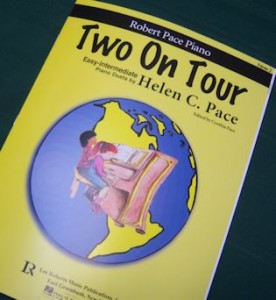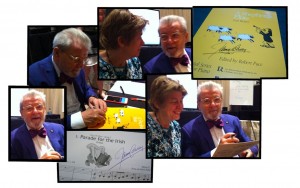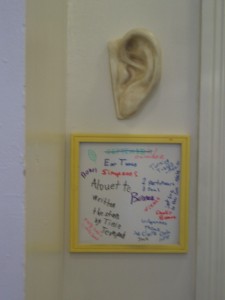One of the fun aspects of attending a national conference is the opportunity to spend a few minutes with the musical celebrities who are participating. We enjoyed a wonderful concert by renowned flutist Sir James Galway who incidentally was exhibiting his new “First Flute” instruction video series in the booth next to Lee Roberts Music Publications where I was assisting teachers to better understand the benefits of the Robert Pace Piano Approach.
It seemed appropriate to have Sir James autograph a copy of “Shepherd’s Flute” composed for piano by Earl Ricker from the Robert Pace Piano Recital Series. Since it is written in a minor key popular in Jewish tunes he quipped, “This is a Jewish Shepherd” and went on to share the fact that “Jewish shepherds lead their flock” while shepherds from other cultures drive their flock from behind.
At his master class Sir James made a point of stressing the importance of practicing his scales which he still does devotedly every day. I guess that proves no matter how accomplished you are you need to pay attention to the fundamentals.
 We observed how personable he was with each visitor taking time time to have a short chat while simultaneously playing chess via his cell phone with a friend online between visitors.
We observed how personable he was with each visitor taking time time to have a short chat while simultaneously playing chess via his cell phone with a friend online between visitors.
Sir James was also kind enough to autograph a page from the “Two On Tour” duet book volume 2 which was the promotional handout in the Lee Roberts’ booth. The piece is called “Parade for the Irish”.
Video
Julie Lovison, Director of The Lake Shore Music Studio in Chicago speaks with piano teachers about the Robert Pace Approach to Piano Instruction at the Music Teachers National Conference MTNA 2015 conference held at The Rio in Las Vegas.





